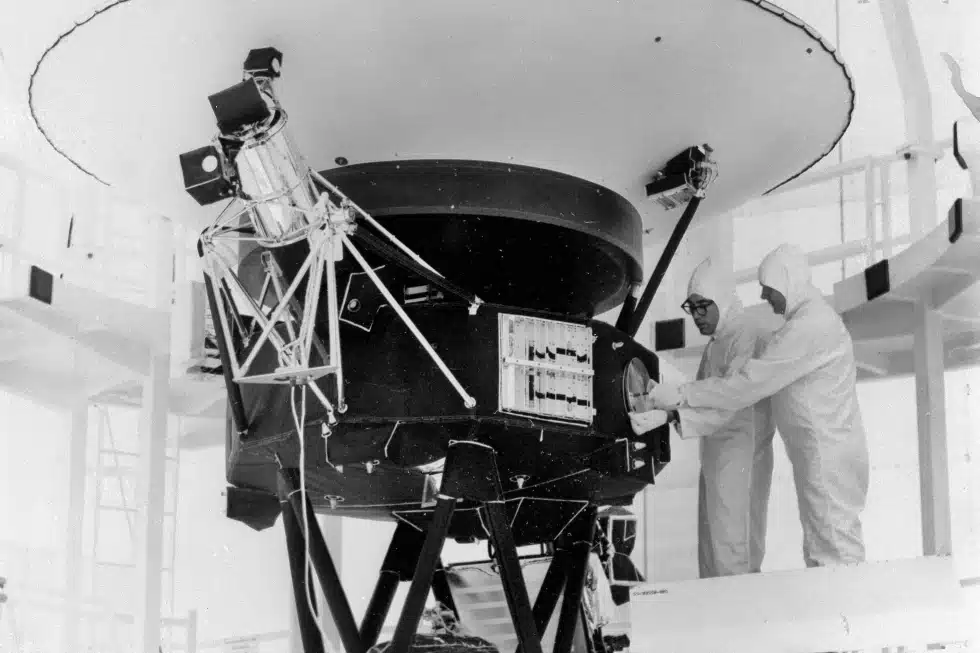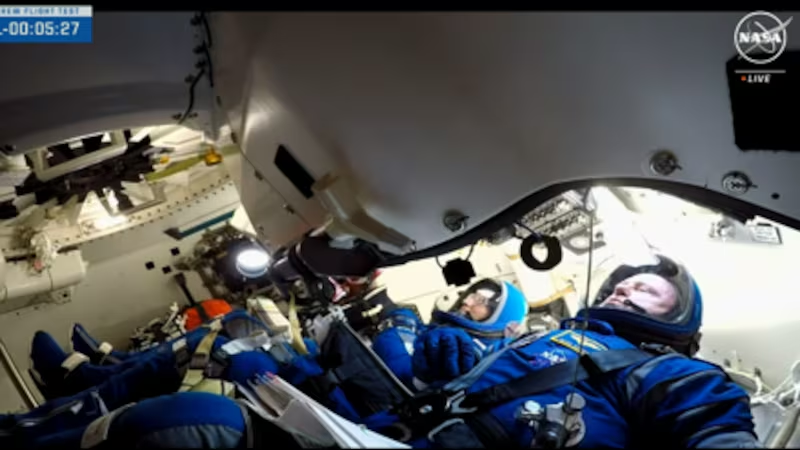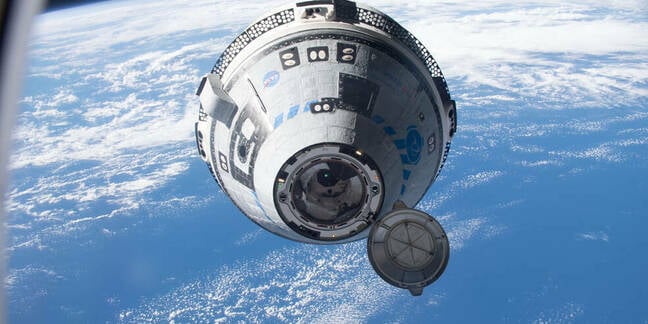Science
New Drug Effectively Treats Hepatitis C
The first hepatitis C drug that has demonstrated success in patients who have failed prior therapy.
The drug telaprevir (Incivek) offers a marked improvement in the treatment of most common form of hepatitis C infection, according to an international team of researchers led by Dr. Ira M. Jacobson, NewYork-Presbyterian Hospital / Weill Cornell Medical Center.
Their study, published an edition of the New England Journal of Medicine, led to the approval of the agent for patient use by the U.S. Food and Drug Administration on May 23.
The ADVANCE results showed that telaprevir in combination with standard therapy (pegylated interferon and ribavirin) cure the virus in 75 percent of treated patients compared with 44 percent of patients receiving standard therapy alone.
In addition, about 60 percent of patients treated with telaprevir had undetectable virus at weeks 4 and 12 of treatment, and who were eligible under the terms of the study to receive 24 weeks of total treatment – half the standard time required for treatment – about 90 percent healed.
Telaprevir represents a “quantum leap forward into a new era for hepatitis C,” says Dr. Jacobson, chief of the Division of Gastroenterology and Hepatology, Vincent Astor Professor and Distinguished Medicine New York-Presbyterian Hospital / Weill Cornell Medical Center. “This agent goes directly to the virus, along with the also recently introduced protease inhibitor boceprevir, is the first of a coming wave of new treatments to help the medical community to eradicate hepatitis C infection in most patients. ”
Over 3 million people in the United States have chronic hepatitis C virus (HCV). The infection, usually transmitted by blood, he moved to the liver, which is mounted a chronic immune response in an attempt to clear. This persistent inflammation can lead to liver damage, cirrhosis or organ failure. Treatment to eradicate the virus often fail, leaving patients with few options other than a liver transplant.
Dr. Jacobson believes that adoption of telaprevir to be a breakthrough in the search for more than two decades to HCV treatment more effective. Multicenter study was part of the first interferon therapy, which stimulates the body’s defenses against HCV, and also participated in the studies that established that the addition of pegylated interferon ribavirin is beneficial, and initial studies demonstrate the effectiveness interferon itself. In 1999, he helped create the Center for the Study of Hepatitis C and serves as medical director of the Center. A joint program of Rockefeller University and Cornell NewYork-Presbyterian/Weill, the Center is a comprehensive, multidisciplinary center dedicated to the study of hepatitis C and liver disease.
Telaprevir is similar in concept to the drugs used to treat HIV. It is a protease inhibitor that closes the enzyme that processes the protein product of the viral genome of HCV after infecting human cells. The drug is effective against HCV genotype 1, which is responsible for nearly three-quarters of all hepatitis C infections in the United States and is also the predominant genotype in Europe, Japan and other countries.
In the ADVANCE study clinic that Dr. Jacobson served as principal investigator, 1,088 untreated patients diagnosed with HCV genotype 1 were assigned to one of three treatment arms: standard therapy for 48 weeks or telaprevir in combination with standard therapy for 8 or 12 weeks followed by standard therapy with a total duration of treatment 24 or 48 weeks. The researchers found that sustained virological response occurred in patients receiving more than 12 weeks (75 percent) or 8 weeks (69 percent) of telaprevir with standard therapy alone (44 percent). (NOTE: Drug package insert reflects the increase in SVR rates of 79 percent, 72 percent and 46 percent, respectively, derived from analysis of review). In total, 58 percent of patients treated with telaprevir received 24 weeks of total treatment.
There were substantial benefits of telaprevir in subgroups of patients who do not generally respond well to standard treatment, Dr. Jacobson says. For example, 62 percent of African Americans participating patients achieved viral cure with telaprevir-based regimen, compared with 25 percent of African Americans treated with standard therapy. In addition, 62 percent of patients with advanced liver cirrhosis achieved a viral cure with telaprevir compared with 33 percent of patients similar to standard therapy. “We have closed the gap in the healing of these populations,” he says.
The results confirm the findings of the U.S. phase 2 PROVE1 study, which was co-authored by Dr. Jacobson and PROVE2 the European study, both studies were published on April 30, 2009 at the New England Journal of Medicine.
Dr. Jacobson noted that the use of telaprevir is added to the side effects of standard therapy, but the marked increase in the effectiveness of these side effects is greater, adding that the risk-benefit ratio is favorable for telaprevir.
“Telaprevir is not the end of the story. There are many medications that evaluates exciting,” he says. “Our goal is to cure most precious of HCV in patients with a cocktail of drugs fast-acting and well tolerated with a direct action against the virus or, in some cases can reach the host factors that contribute to replication HCV or liver disease as a result. Many lives were saved. ”
Telaprevir was developed by Vertex Pharmaceuticals Incorporated in collaboration with Tibotec Pharmaceuticals and Mitsubishi Tanabe Pharma. Vertex provided funding for the study. Dr. Jacobson has received consulting fees and / or financial support from Vertex, Roche (manufacturer of peginterferon and ribavirin), Schering-Plough (manufacturer of peginterferon and ribavirin).
This article was first published by NewYork-Presbyterian Hospital / Weill Cornell Medical Center / Weill Cornell Medical College.

Science
NASA Switches Off Instrument On Voyager 2 Spacecraft To Save Power

NEW YORK — To save power, NASA turned off another scientific equipment on its long-running Voyager 2 spacecraft.
NASA Switches Off Instrument On the Spacecraft To Save Power
The space agency announced on Tuesday that 2’s plasma science instrument, meant to study the movement of charged atoms, was turned off in late September to allow the spacecraft to continue exploring for as long as possible, which is estimated to be into the 2030s.
NASA turned off a suite of instruments on Voyager 2 and its twin, Voyager 1, after exploring the gas giant planets in the 1980s. Both are currently in interstellar space or the region between stars. The plasma instrument on Voyager 1 stopped working years ago and was finally shut off in 2007.
The remaining four instruments on 2 will continue to collect data on magnetic fields and particles. Its mission is to investigate the regions of space beyond the sun’s protective sphere.
NASA Switches Off Instrument On Voyager 2 Spacecraft To Save Power
It launched in 1977, is the only spacecraft to have visited Uranus and Neptune. It is now more than 12 billion miles (19.31 billion kilometers) from Earth. 1 is more than 15 billion miles (24.14 billion kilometers) beyond Earth.
SOURCE | AP
Science
Hurricane Kirk Could Cause Dangerous Surf Conditions Along The US East Coast

MIAMI — Hurricane Kirk’s waves could generate life-threatening surf and rip current conditions this weekend throughout the United States East Coast, as well as in Bermuda, the Greater Antilles, and the Bahamas, according to forecasters.
Kirk was a Category 3 hurricane in the middle Atlantic Ocean that might grow further but was predicted to stay away from land, according to the Miami-based National Hurricane Center on Thursday.
Hurricane Kirk Could Cause Dangerous Surf Conditions Along The US East Coast
Kirk-generated swells were forecast to reach parts of the Leeward Islands on Friday, Bermuda and the Greater Antilles on Saturday, and the East Coast and the Bahamas on Sunday, according to the center.
No coastal watches or warnings were in effect. The major storm was around 1,130 miles (1,820 kilometers) east of the Leeward Islands, with maximum sustained winds of 125 mph (205 km/h).
Meanwhile, Tropical Storm Leslie formed late Wednesday in the eastern Atlantic and is expected to strengthen into a hurricane in the following days, forecasters said. It was also not considered a threat to the land.
Hurricane Kirk Could Cause Dangerous Surf Conditions Along The US East Coast
The storm was about 540 miles (870 kilometers) southwest of Cabo Verde’s southernmost tip, with maximum sustained winds of 45 mph (75 kph), according to the center.
The storms raged in the Atlantic as rescuers in the United States Southeast sought for missing persons after Hurricane Helene struck last week, leaving a trail of death and devastation.
SOURCE | AP
Science
NASA Sends First Manned Starliner Spacecraft to Space Station

NASA has announced astronauts Butch Wilmore and Suni Williams are safely in orbit on the first crewed flight test of Boeing’s Starliner spacecraft heading for the International Space Station.
As part of NASA’s Boeing Crew Flight Test, the astronauts launched a ULA (United Launch Alliance) Atlas V rocket from Space Launch Complex-41 at Cape Canaveral Space Force Station in Florida at 10:52 a.m. EDT Wednesday for an end-to-end test of the Starliner system.
“Two brave NASA astronauts are well on their way to this historic first test flight of a brand-new spacecraft,” stated NASA Administrator Bill Nelson. “Boeing’s Starliner represents a new era of American exploration. Human spaceflight is a risky endeavor, but it is worth it. It is an exciting time for NASA, our commercial partners, and the future of space exploration. “Go Starliner, Butch, and Suni!”
The flight test is part of NASA’s Commercial Crew Program and will help validate the transportation system, launch pad, rocket, spacecraft, in-orbit operations capabilities, and return to Earth with astronauts aboard as the agency prepares to certify Starliner for rotational missions to the space station. Starliner has already completed two uncrewed orbital missions, including a test to and from the space station, as well as a pad abort demonstration.

Boeing Starliner Makes Orbit
“With Starliner’s launch, separation from the rocket, and arrival in orbit, Boeing’s Crew Flight Test is right on track,” said Mark Nappi, vice president and program manager for Boeing’s Commercial Crew Program. “Everyone is focused on giving Suni and Butch a safe, comfortable, ride and performing a successful test mission from start to finish.”
Boeing’s mission control center in Houston will supervise a sequence of autonomous spacecraft maneuvers while Starliner is in flight. NASA teams will supervise space station activities from the Mission Control Center at the agency’s Johnson Space Center in Houston.
“Flying crew on Starliner represents over a decade of work by the Commercial Crew Program and our partners at Boeing and ULA,” said Steve Stich, Commercial Crew Program Manager at NASA’s Johnson Space Center in Houston. “For many of us, this is a career-defining occasion, ushering in a new crew transportation capacity for our agency and our country. We will take it one step at a time, putting Starliner through its paces and remaining watchful until Butch and Suni safely land back on Earth at the end of this test journey.”
At about 12:15 p.m., Starliner will dock autonomously to the forward-facing port of the station’s Harmony module. Thursday, June 6, and will remain at the orbital laboratory for almost a week.
Wilmore and Williams will help ensure that the spacecraft is functioning properly by testing the environmental control system, the displays and control system, and moving the thrusters, among other things, during flight.
Wilmore and Williams will join the Expedition 71 crew, which includes NASA astronauts Michael Barratt, Matt Dominick, Tracy C. Dyson, and Jeanette Epps, as well as Roscosmos cosmonauts Nikolai Chub, Alexander Grebenkin, and Oleg Kononenko.
NASA’s arrival and in-flight event coverage is as follows (all times Eastern and subject to change depending on real-time operations):
NASA Television channels will continue to broadcast the Starliner’s mission.
Thursday, June 6
9:30 a.m. – Arrival coverage begins on NASA+, the NASA app, and YouTube, and continues on NASA Television and the agency’s website.
12:15 p.m. – Targeted docking
2 p.m. – Hatch opening
2:20 p.m. – Welcome remarks
3:30 p.m. – Post-docking news conference at NASA Johnson with the following participants:
- NASA Associate Administrator Jim Free
- Steve Stich, manager, NASA’s Commercial Crew Program
- Jeff Arend, manager for systems engineering and integration, NASA’s International Space Station Office
- Mark Nappi, vice president and program manager, Commercial Crew Program, Boeing
Coverage of the post-docking news conference will air live on NASA+, NASA Television, the NASA app, YouTube, and the agency’s website.
To attend the post-docking briefing, U.S. media must contact the NASA Johnson newsroom at: jsccommu@mail.nasa.gov or 281-483-5111 by 1 p.m. Thursday, June 6. To join by phone, media must contact the NASA Johnson newsroom by 3 p.m. Thursday, June 6.
5:50 p.m. – NASA Administrator Bill Nelson, Deputy Administrator Pam Melroy, Associate Administrator Jim Free, Associate Administrator for Space Operations Ken Bowersox, and Johnson Space Center Director Vanessa Wyche will speak with Wilmore and Williams about their launch aboard the Starliner spacecraft.
Coverage of the Earth to space call will air live on NASA+, NASA Television, the NASA app, YouTube, and the agency’s website.
Saturday, June 8
8:50 a.m. – NASA astronauts Wilmore and Williams will provide a tour of Starliner.
Coverage of the in-orbit event will stream live on NASA+, NASA Television, the NASA app, YouTube, and the agency’s website.
Monday, June 10
11 a.m. – Williams will speak to students from Sunita L. Williams Elementary School in Needham, Massachusetts, in an event aboard the space station.
Coverage of the Earth to space call will air live on NASA+, NASA Television, the NASA app, YouTube, and the agency’s website.
Tuesday, June 11
3:15 p.m. – Wilmore will speak to students from Tennessee Tech University in an event aboard the space station.
Coverage of the Earth to space call will air live on NASA+, NASA Television, the NASA app, YouTube, and the agency’s website.
-

 News4 years ago
News4 years agoLet’s Know About Ultra High Net Worth Individual
-
Entertainment2 years ago
Mabelle Prior: The Voice of Hope, Resilience, and Diversity Inspiring Generations
-

 Health4 years ago
Health4 years agoHow Much Ivermectin Should You Take?
-

 Tech2 years ago
Tech2 years agoTop Forex Brokers of 2023: Reviews and Analysis for Successful Trading
-

 Lifestyles3 years ago
Lifestyles3 years agoAries Soulmate Signs
-

 Movies2 years ago
Movies2 years agoWhat Should I Do If Disney Plus Keeps Logging Me Out of TV?
-

 Health3 years ago
Health3 years agoCan I Buy Ivermectin Without A Prescription in the USA?
-

 Learning3 years ago
Learning3 years agoVirtual Numbers: What Are They For?
